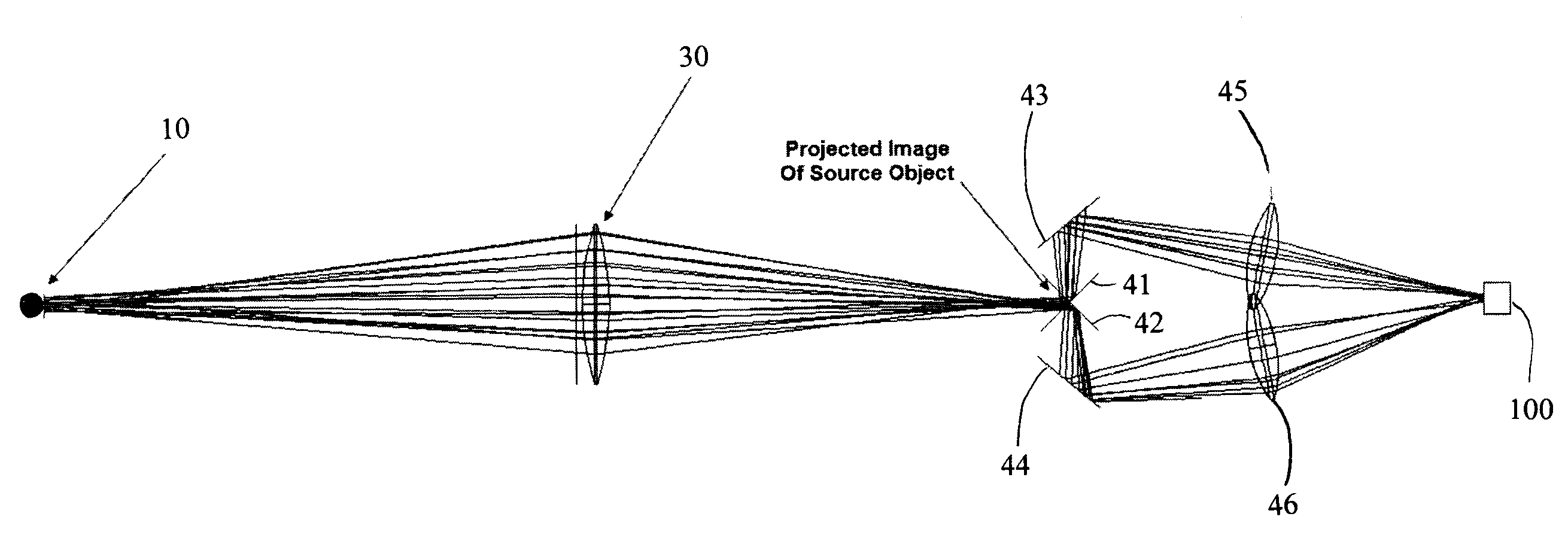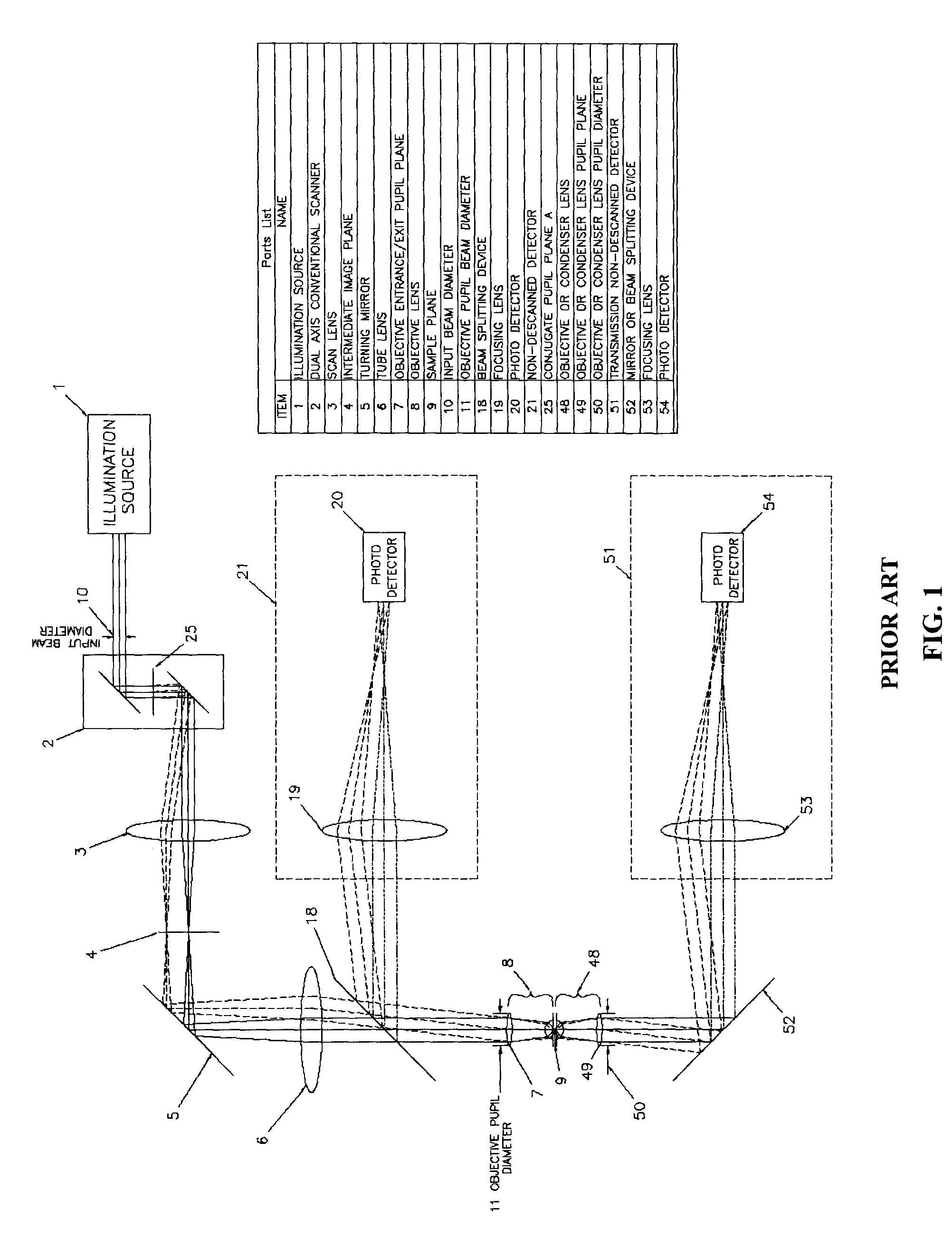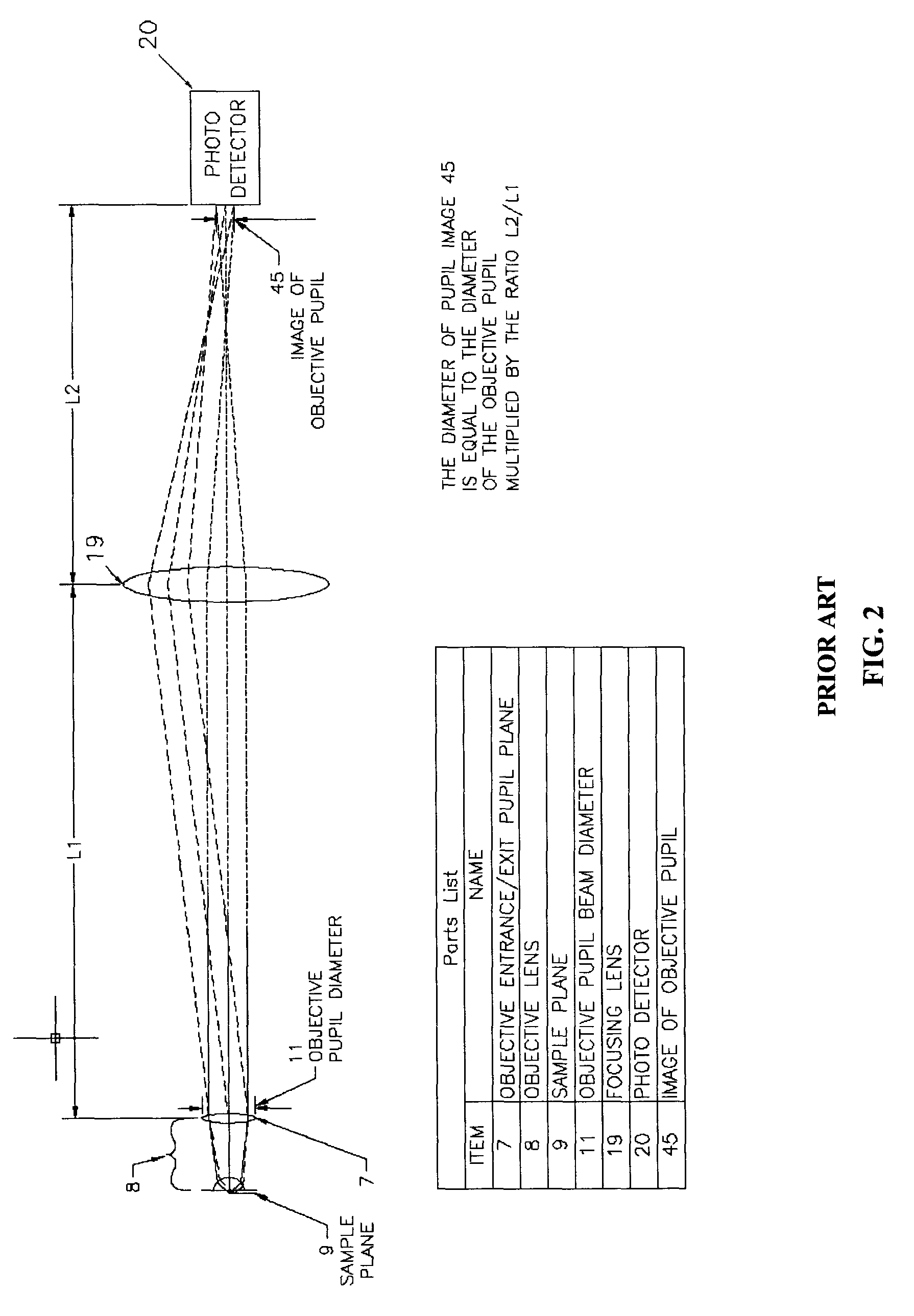Apparatus for improving detection efficiency of multiphoton microscopy systems by focus compensation, pupil image division, and parallel pupil rearrangement
a multi-photon microscopy and focus compensation technology, applied in the field of multi-photon microscopy, can solve the problems of fundamental loss of signal, inescapable geometric difficulty, waste of significant portion of signal,
- Summary
- Abstract
- Description
- Claims
- Application Information
AI Technical Summary
Benefits of technology
Problems solved by technology
Method used
Image
Examples
Embodiment Construction
[0055]The present invention provides a novel apparatus and corresponding method to improve the distribution of the signal flux from a large aperture objective lens. The signal is divided (i.e. partitioned) and the partitioned sub-signals superimposed onto the active area of a small photodetector. The device is particularly suitable in the field of multiphoton microscopy in general and fluorescent and / or harmonic emission multiphoton microscopy in particular.
[0056]Thus, the invention is directed to an apparatus for spatial partitioning and redistribution of light emitted from a source object. The source object may be any object emitting electromagnetic radiation, such as a microscope objective lens pupil emitting signal light. (Again, “light” as used herein includes all forms of electromagnetic radiation—microwaves, UV, visible, IR, etc.) The simplest version of the invention comprises a first beam splitter. This beam splitter is configured to split the signal light into “n” independ...
PUM
 Login to View More
Login to View More Abstract
Description
Claims
Application Information
 Login to View More
Login to View More - R&D
- Intellectual Property
- Life Sciences
- Materials
- Tech Scout
- Unparalleled Data Quality
- Higher Quality Content
- 60% Fewer Hallucinations
Browse by: Latest US Patents, China's latest patents, Technical Efficacy Thesaurus, Application Domain, Technology Topic, Popular Technical Reports.
© 2025 PatSnap. All rights reserved.Legal|Privacy policy|Modern Slavery Act Transparency Statement|Sitemap|About US| Contact US: help@patsnap.com



